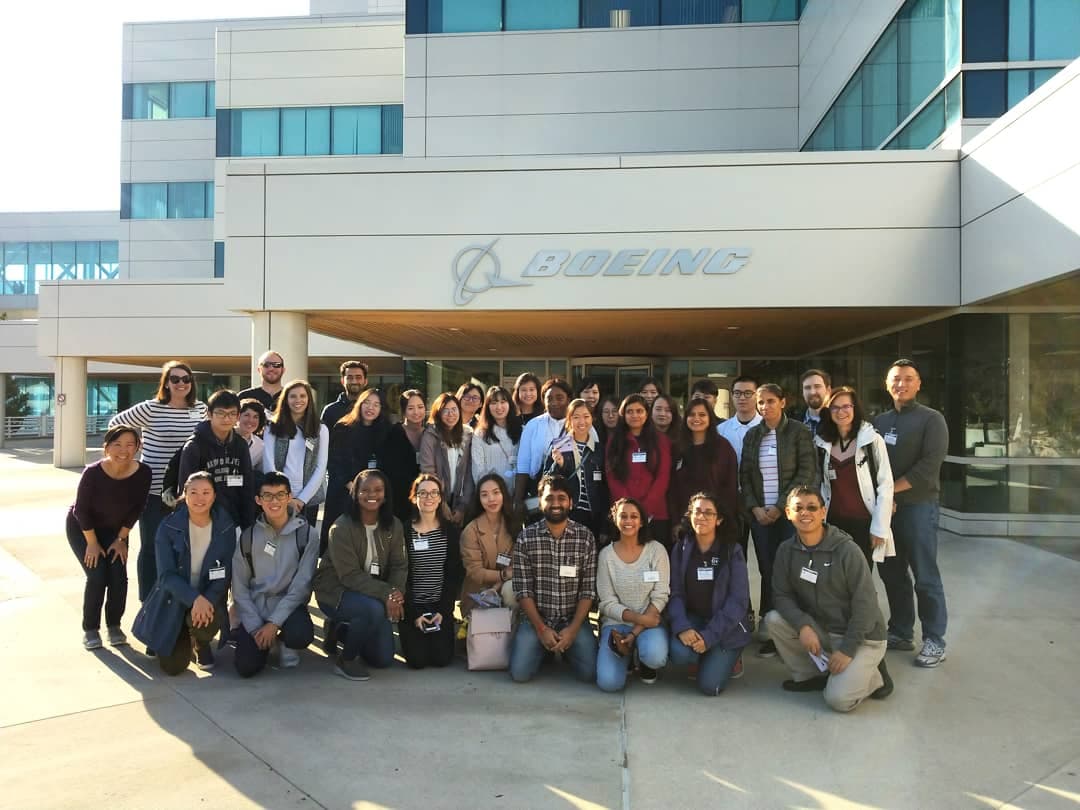An Insider Look at the Boeing Factory

Last week, 23 MSCM students attended an executive tour of the Boeing factory and it blew us away. The building, large enough to house 75 American football fields, was lined with indoor roads and sidewalks. People were zipping up and down the “streets” in cars and on custom Boeing tricycles. Boxy robots followed their human counterparts around like dogs, lifting heavy items or transporting various plane bits from one place to another. Overhead, school bus-sized cranes suspended from steel tracks hummed their way across the ceiling at the command of their tiny human operators.
Out of the classroom and onto the manufacturing floor
“Boeing’s supply chain is incredibly complex,” said Sara Jones, Director of the MSCM program, as we walked past model 747s in the factory lobby. “It’s easy to apply frameworks and create solutions in a classroom setting. When our students see operations in person, the enormity of it all, it presents a different reality and helps better prepare students to apply these concepts in their careers.”
The facility we visited is a final assembly factory. That means the systems are built elsewhere and brought to Everett to be welded together into a complete airplane. Carts full of various plane parts individually labeled with bar codes and RFID codes lined the manufacturing floor. “Mechanics used to run back and forth to the tool room, which took up a lot of time,” our guide told us. “But time is money, safety and quality, so we implemented this detailed inventory and tracking system.” Individual mechanic stations are now populated daily with the specific array of parts and tools for the task at hand.
Building context to reinforce classroom concepts
Our students were impressed (and, honestly, a little starry-eyed) at the magnitude of the operation. “The manufacturing capacity, especially with the 777X was just amazing,” MSCM student Harsh Chopra told me was we wove our way between fuselages and half-finished plane wings. “It was great to see this, it completely reinforces what our professors are teaching us. Hearing about the sourcing, how they deal with late or missing parts to keep their manufacturing timeline going, just complete coordination of all these moving cogs was fascinating. Thirty million parts per plane! That number blew me away, that is serious coordination.”
Complex supply chains in action
Leaders in industry tell us that it’s easy to get holed up in the office as you move up in an organization. They think it’s critical for students to see how things are done first hand. MSCM Program Director Sara Jones and I looked around as the tour drew to a close and watched students mingling with Boeing employees, eagerly asking questions about sourcing and how the color-coding system worked. “We want to give students who join this program as many opportunities as possible to see supply chains in action; to take what they are learning in class and see how that plays out in the real world.”
Ready to jump in to a career in supply chain management? Check out the UW Foster School of Business Master of Supply Chain Management Program.
Written by Victoria Pinheiro, MSc.
MSCM Content Strategy Writer
[email protected]
